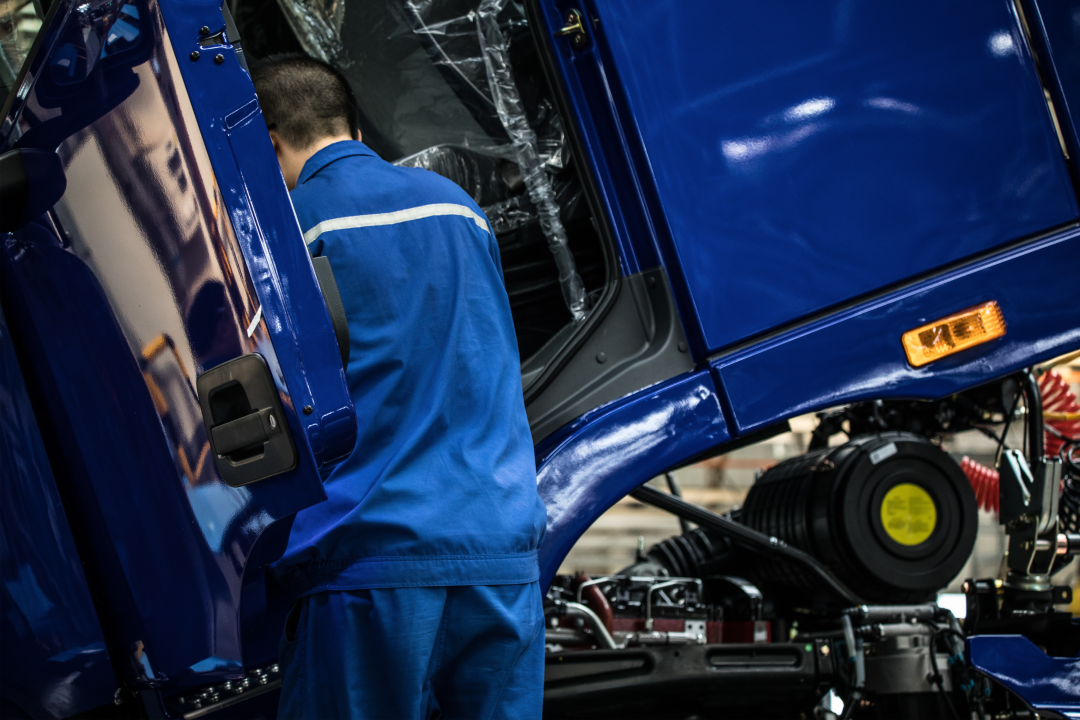
Susie Jones
Дальнобойщики с ограниченными возможностями - какая поддержка доступна?
Создано: 12.08.2024
•
Обновлено: 12.08.2024
В Великобритании 23 % трудоспособного населения сообщили, что они инвалиды - и, как многие не знают, значительная часть из них - водители грузовиков, которые бесконечно пересекают Европу, чтобы доставить ваши товары. Несмотря на многочисленные проблемы, их присутствие в автотранспортном сообществе подчеркивает важность инклюзивности и разнообразия в отрасли.
Если у меня есть инвалидность, могу ли я водить грузовик?
Если у вас есть физические или когнитивные нарушения, вы можете управлять грузовым автомобилем. Однако вы должны пройти медицинское освидетельствование, чтобы определить, достаточно ли вы пригодны. Медицинский осмотр включает в себя следующее:
Беседа с врачом о вашем здоровье: Водители должны быть честными и открытыми.
Физический осмотр, во время которого врач проверит:
Кровяное давление
Сердце
Видение
Тест на диабет
Неврологические заболевания
Расстройства сна.
По окончании проверки DVLA примет решение о том, можете ли вы управлять автомобилем.
Изменения в грузовике
Для водителей с ограниченными физическими возможностями предусмотрены следующие модификации:
Ручные регуляторы вместо педалей
Вспомогательные средства для рулевого управления
Ускорители для левой ноги
Переоборудование сцепления
Жгуты
Специализированные кресла
Оборудование для укладки инвалидных колясок.
В 2021 году производитель грузовых автомобилей MAN адаптировал четыре [грузовика для водителей-инвалидов] (https://trans.info/check-out-the-lorries-man-altered-to-accommodate-disabled-drivers-228342). Адаптация включала в себя оснащение грузовиков подъемной платформой, чтобы инвалиды-колясочники могли легко попасть в кабину, а все органы управления располагались на рулевом колесе или рядом с ним.
Несмотря на развитие технологий и адаптаций в этой отрасли, многие водители с ограниченными возможностями по-прежнему сталкиваются с трудностями на работе.

С какими препятствиями сталкиваются водители грузовиков с ограниченными возможностями?
Водителям с ограниченными возможностями бывает непросто устроиться на работу, даже если они обладают необходимой квалификацией и прошли медкомиссию. Многие компании не хотят предоставлять адаптированный автомобиль, поскольку это может быть дорогостоящим вложением.
Энди, генеральный директор благотворительной организации [Globe Truckers UK] (https://www.globetruckersuk.org/), утверждает, что водителям, готовым оплатить необходимые приспособления, все еще сложно найти работу.
"Некоторые транспортные компании неохотно берут на работу людей с ограниченными возможностями - они часто опасаются препятствий, с которыми водители сталкиваются вне кабины, например, лестниц и подъемов".
Дэвид Чемберс, [водитель грузового автомобиля с ограниченными возможностями] (https://www.disabilitynewsservice.com/disabled-hgv-driver-accuses-back-to-work-ministers-of-hypocrisy-over-equality-laws/), выступил против испытаний, с которыми он сталкивается ежедневно, и призвал внести разумные поправки в Закон о равенстве - особенно после того, как правительство призвало больше людей, получающих пособие по инвалидности, [вернуться на работу] (https://www.disabilityrightsuk.org/news/chancellor-announces-back-work-plan-disabled-people-backed-tougher-sanctions#:~:text=Forming%20part%20of%20his%20Autumn,for%20and%20stay%20in%20work.).
Дэвид и многие другие сталкиваются с трудностями на крупных автобазах, где, согласно Закону о равенстве, автобаза не обязана делать разумные приспособления для водителей с ограниченными возможностями. По соображениям безопасности они вынуждены ждать в стороне от своих грузовиков во время разгрузки, что приводит к необходимости проходить большие расстояния и подниматься по лестнице.
Какая поддержка оказывается водителям грузовиков с ограниченными возможностями?
Для тех, кто получил травму или заболевание, несовместимое с жизнью, поиск поддержки может оказаться непростой задачей. Британская благотворительная организация Globe Truckers была создана водителями для помощи водителям и оказывает поддержку раненым, больным и инвалидам.
"Многие водители с ограниченными возможностями или травмами не знают, куда обратиться, поскольку информации для них очень мало. Вот тут-то мы и приходим на помощь и предлагаем свою поддержку и руководство - будь то указание на нужных людей или предоставление средств на оборудование".
"Некоторым водителям просто нужно с кем-то поговорить, и мы готовы оказать им эту поддержку любым возможным способом. В будущем мы хотели бы иметь возможность финансировать адаптацию грузовиков для водителей. Адаптация может быть очень дорогостоящей, и большинству водителей-инвалидов приходится платить за нее из своего кармана. Чтобы добиться этого, нам нужно больше финансирования и поддержки со стороны представителей отрасли", - говорит Энди.
Как индустрия может помочь?
По словам Энди, чтобы сделать ландшафт более инклюзивным и разнообразным, индустрия должна сделать все возможное, чтобы учесть физические и когнитивные недостатки, и это изменение должно произойти в ближайшее время.
"Крайне важно, чтобы индустрия возвращала свою поддержку и время в себя, будь то непосредственно водители-инвалиды или благотворительные организации, такие как Globe Truckers. Невозможно рассчитывать на то, что индустрия будет привлекательна для людей, если они не оказывают поддержку меньшинствам".
Стоянки для грузовиков, являющиеся пристанищем для многих водителей, могут проложить путь к этому, обеспечив доступные условия. В 2022 году правительство инвестировало 100 миллионов фунтов стерлингов в эту отрасль, чтобы улучшить придорожное оборудование и создать более безопасные стоянки для грузовиков.

Государственное финансирование может улучшить доступность для водителей с ограниченными возможностями на популярных остановках. Такие изменения, как приведенные ниже, могут оказать существенное влияние:
Парковочные места с доступом для инвалидных колясок: водителям, которым трудно садиться в кабину и выходить из нее, необходимо дополнительное пространство - особенно для тех, кому нужен подъемник.
Доступные удобства: доступные рестораны, туалеты и другие объекты обеспечивают инклюзивную среду.
Компании автопарка могут помочь в создании более инклюзивной среды, приняв следующие меры:
Модификация грузовиков - облегчение управления для водителей с ограниченными возможностями с помощью ручного управления и адаптивных технологий.
Поддержка и обучение - организация курсов для решения конкретных задач или удовлетворения потребностей.
Инклюзивный подход к найму - не предвзятый подход при найме способствует формированию инклюзивной и разнообразной культуры.
Обеспечение разнообразной и инклюзивной культуры жизненно важно для привлечения новых водителей в индустрию грузоперевозок. Поддержка людей с физическими и когнитивными нарушениями остается вне поля зрения отрасли, в результате чего многие водители не знают, к кому обратиться. Водители-инвалиды предлагают уникальную точку зрения и способность к адаптации, что является желанным изменением в отрасли.
Что делать, если вы стали инвалидом во время работы?
Если у вас появилось "уведомляемое" медицинское заболевание или инвалидность, вы должны поставить об этом в известность DVLA:
Примите решение по письму - некоторые обстоятельства могут потребовать дополнительной информации.
Оцените состояние своего здоровья и примите решение о результате.
Если вам нужно приспособить свой автомобиль, вам потребуется независимая оценка [приспособлений] (https://www.drivingmobility.org.uk/).
Если вы должны прекратить вождение, DVLA предоставит вам медицинское обоснование.



